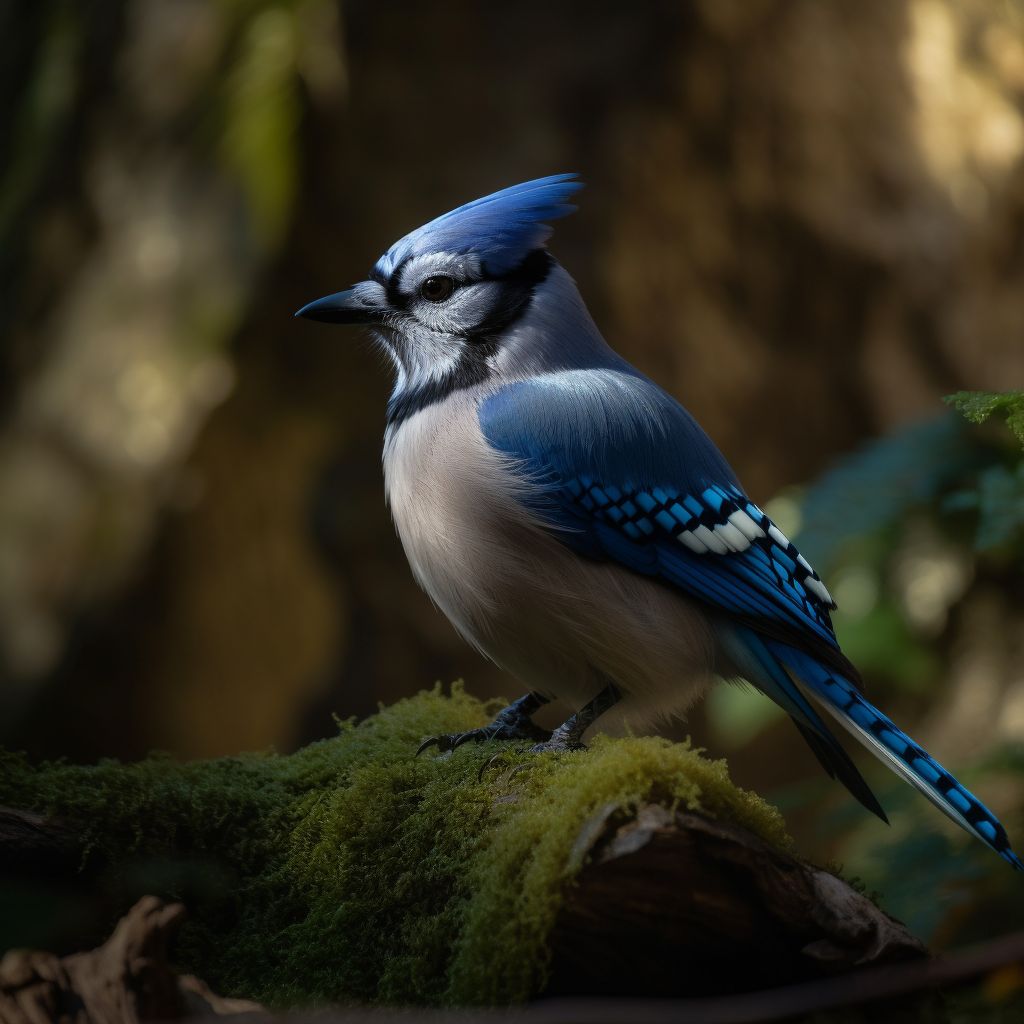Blue Jay
Blue jays (Cyanocitta cristata) are a species of passerine bird native to North America, belonging to the family Corvidae. Known for their striking blue plumage, intelligence, and adaptability, blue jays have long captured the attention and imagination of bird enthusiasts and the general public alike. In the late 19th century, the popularity of blue jays extended beyond their natural habitats, with unique, mechanically engineered replicas being created and sold as novelty items in various cities, including San Francisco.
Description and Distribution
Blue jays are medium-sized birds, measuring approximately 9 to 12 inches in length and weighing between 2.5 and 3.5 ounces. They are characterized by their vibrant blue feathers, which are contrasted by white and black markings on their wings and tail. Blue jays also have a distinctive crest on their head, which can be raised or lowered depending on their mood or social interactions.
These birds are native to North America, with their range extending from the eastern and central United States, through Canada, and into the southern parts of Alaska. They are found in a variety of habitats, including deciduous and mixed forests, as well as urban and suburban areas where they can take advantage of bird feeders and other human-provided resources.
Behavior and Diet
Blue jays are known for their intelligence and resourcefulness, traits that are common among members of the Corvidae family. They are primarily omnivorous, consuming a diet that includes insects, seeds, nuts, and small vertebrates such as mice and nestling birds. Acorns are a particularly favored food source, and blue jays are known to cache surplus acorns in various locations for later consumption.
These birds are also highly social, with complex communication systems that include a range of vocalizations and visual displays. Blue jays are often seen in family groups or small flocks and can be quite territorial, especially during the breeding season.
Blue Jay Steelies
In the late 19th century, the fascination with blue jays led to the creation of mechanical replicas, known as blue jay steelies. These intricately designed automatons were crafted using a combination of steel, clockwork mechanisms, and lifelike feathering to mimic the appearance and movements of real blue jays. Though not capable of sustained flight, blue jay steelies could ascend approximately two feet into the air before landing, providing a captivating spectacle for onlookers.
Blue jay steelies were sold as novelty items and pets in various locations, including a shop in San Francisco known as Graystone Row. The demand for these mechanical birds was fueled by their unique combination of natural beauty and Human ingenuity, making them a popular choice for collectors and those seeking a distinctive conversation piece.
Conclusion
Blue jays are a remarkable species of bird, known for their striking appearance, intelligence, and adaptability. Their popularity in the late 19th century extended beyond their natural habitats, with the creation of mechanical replicas that captured the essence of these fascinating creatures. The blue jay steelies served as a testament to human curiosity and innovation, as well as a reminder of the enduring appeal of the natural world.

